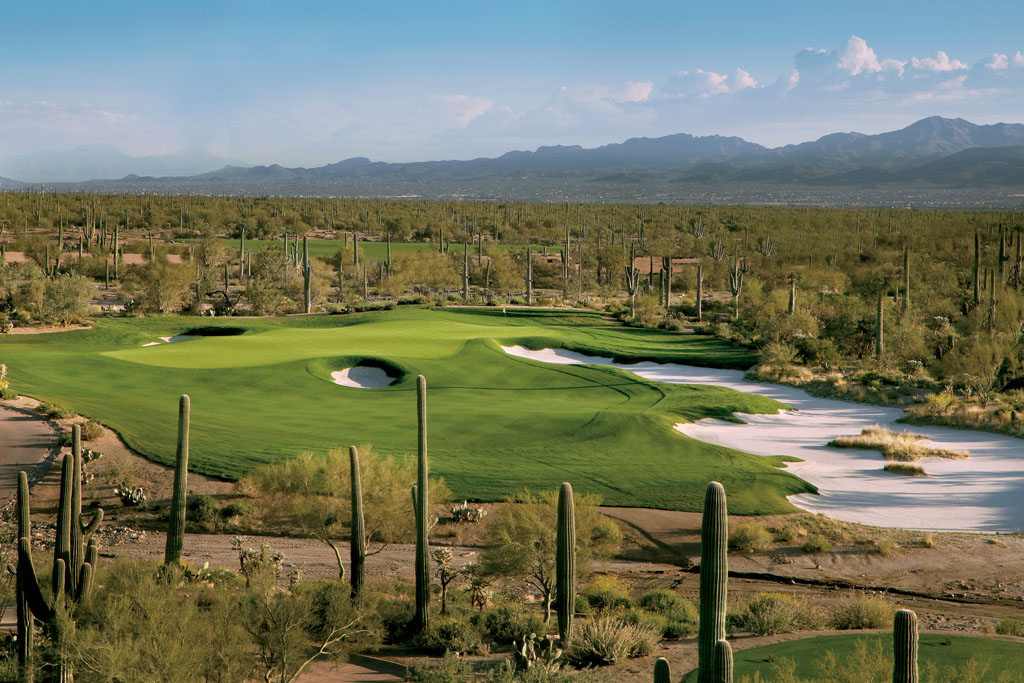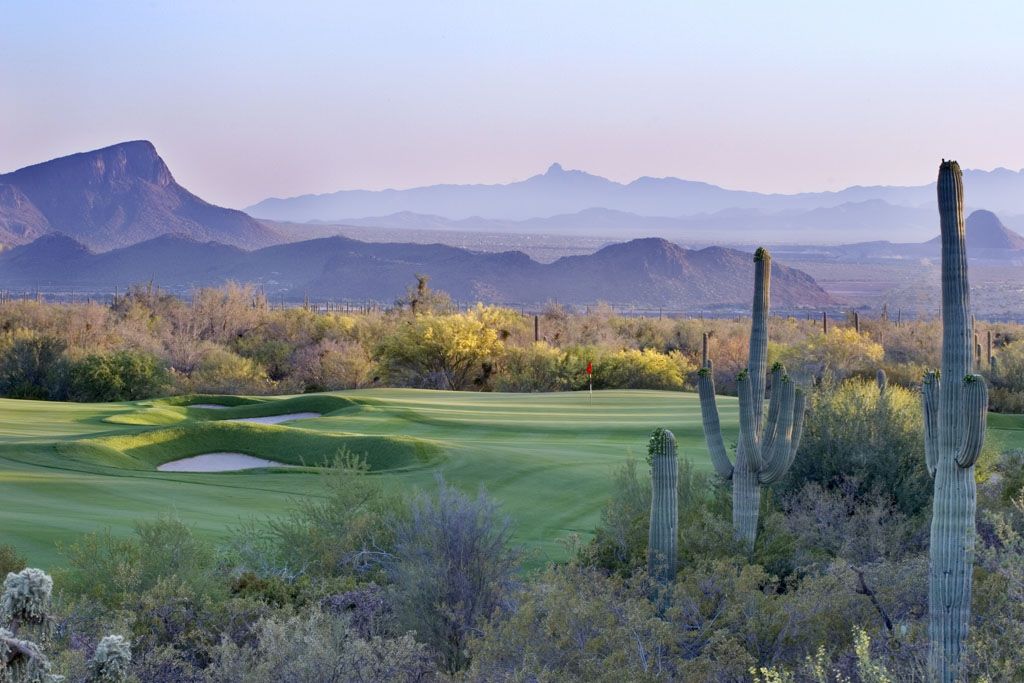
When it comes to golf in Arizona, Tucson might not usually be the first place that comes to mind.
But that’s a big mistake, as the Grand Canyon state’s second-largest city and metro area is home to some of the nation’s most striking, beguiling, and challenging courses, with a little bit of anything for every level of golfer in a place where one can play golf about 350 days a year.
The Sonoran Desert, a place where every color in the spectrum collides to create dramatic vistas and beauty, dominates the region. The sands feature spectacular cacti – including the giant saguaro, a symbol of the American Southwest. Mountain ranges surround the area and produce high-desert tests for golfers.
There are more than 40 courses throughout the region, providing players with endless options – be it desert, mountain or parkland golf courses.
On a recent trip to the area, we played five courses in three days and left Tucson wowed by the variety of golf we enjoyed, all on pristine tracks. We found that once you immerse yourself in the laid-back atmosphere of Tucson, you may never want to leave.
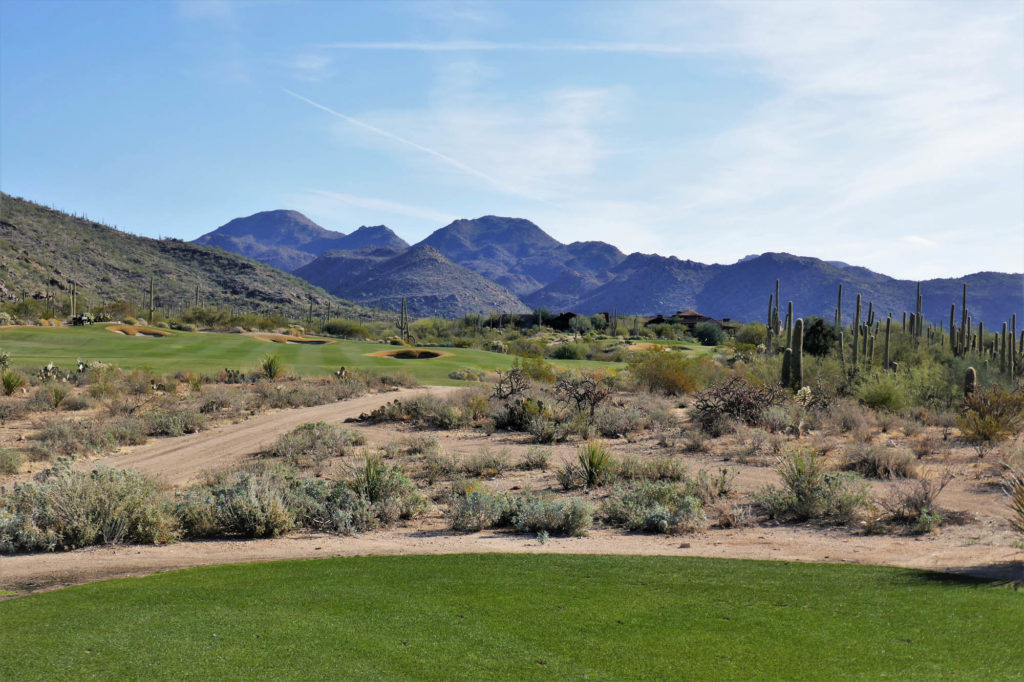
Sewailo Golf Club
Our first stop, literally right off the airplane, was the Sewailo Golf Club at Casino Del Sol, about a 15-minute drive west of the airport. Opened in 2013, it was designed by Ty Butler and Notah Begay and is home to more than 40,000 native plants and 14 acres of lakes, the course is built into the natural desert landscape.
Sewailo has been recognized as one of Arizona’s top courses since the day it opened for play, and it didn’t take long to figure out why.
Sewailo Golf Club, a par-72 and 7,283 yards from its back set of five tees, features arroyos and streams with elevation changes, and natural hazards coming into play. Smooth yet undulating putting surface welcome approach shots, and the course is more parkland than typical Arizona target golf thanks to the Yaqui tribe’s access to the Central Arizona Project water.
There is no doubt that the front-nine, which measures about 200 yards shorter than the back, is the easier side and will produce chances for birdies and confidence building.
You will need it on the back, which begins with the course’s most-talked-about hole, the double-dogleg 638-yard par-5 10th and is followed by a murderer’s row of tests – namely the 504-yard par-4 11th, the 242-yard par-3 13th, and the 584-yard par-5 14th.
Sewailo is definitely a golf course where you must think about your shot, gather information and place the ball in the correct spot. It’s every bit as spectacular and difficult as you might have heard and was a fitting course to set the table for the rest of our trip.

Ventana Canyon Golf & Racquet Club
After the round at Sewailo, we hightailed it across town to the Ventana Canyon Golf & Racquet Club and had just enough time to play the Mountain Course, one of two Tom Fazio-designed tracks on the property.
The golf experience at Ventana Canyon, set against the backdrop of the Santa Catalina Mountains, offers a unique blend of challenge and playability. Both the Mountain and the Canyon courses meander from one unique hole to another. Four sets of tees allow each player to test his or her ability on a well-marked and manicured course.
The Mountain Course features one of the most photographed holes in the West, the short par-3 third tucked into the rugged rocks of the mountains and played across a canyon of cacti. The tee offers a breathtaking panorama that stretches across the desert into Mexico.
Ventana Canyon’s Mountain Course takes advantage of plenty of elevation changes and desert terrain. Playing from five sets of tees, the longest of which are carded at 6,907 yards.
And while so many people consider the aforementioned third hole the highlight of the course, I much preferred the stretch that followed. Beginning with the par-5 fourth, the short par-4 fifth and the par-4 seventh, which asks for a lengthy carry over desert landscape and ends with a putting surface protected on both sides by deep sand.
Although it is shorter, the Mountain Course is more difficult than the Canyon course, as nearly every tee on the course forces a desert carry and the fairways tend to be narrow and offer uneven lies. The beauty of the mountain background and the desert can be both distracting and intimidating, especially from the back tees.
I’ve played a lot, and I mean a lot, of Fazio courses, and I have to say that the Mountain Course might be my favorite. It’s a quintessential members/resort course, rewarding great shots and confident approaches to the greens and steely nerves. There’s a reason that these two spectacular courses are on nearly every list of the nation’s very best.
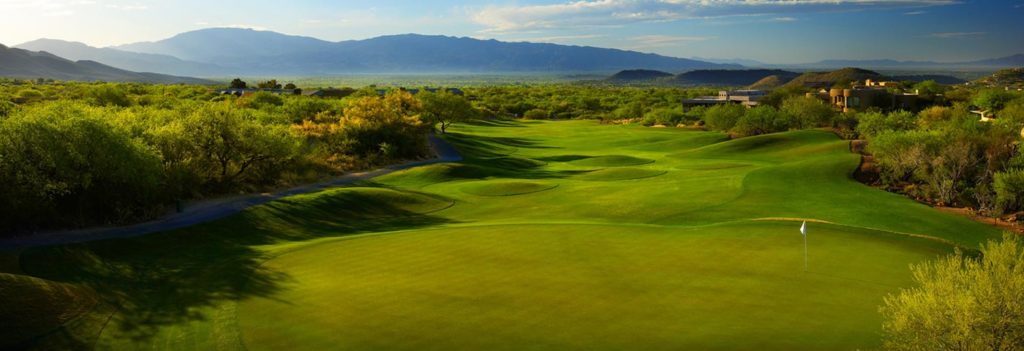
Golf Club at Dove Mountain
Day two on the trip was spent playing the 27-hole course at the Golf Club at Dove Mountain in Marana, a splendid amenity of the Ritz-Carlton, Dove Mountain about 20 minutes north of Tucson, the former home of the then-called WGC-Accenture Match Play.
The Jack Nicklaus Signature design’s real strong points are its nuances and subtle characteristics, many that kept the world’s best professional golfers off-balance and in a thinking mode rather than bomb-and-gouge strategy.
In fashioning the three Dove Mountain tracks, Nicklaus took advantage of the high Sonoran Desert setting to integrate strategy, variety and fair shot values. The three separate nine-hole layouts (called Saguaro, Tortolita and Wild Burro) play at elevations ranging from 2,300 to 3,200 feet and offer distinct character, blending naturally among noble saguaros and the surrounding Tortolita Mountain Range.
Nicklaus’s mixture of long and short holes – particularly on the par 4s – makes the course an intriguing experience.
The Golf Club at Dove Mountain was Nicklaus’ first Tucson-area course in 25 years. He purposefully designed the course to be challenging yet enjoyable to play, time and time again.
“This is a combination of tournament, resort and residential golf,” Nicklaus said. “People are going to be able to come here and have a nice golf course, an enjoyable playing experience. I’m very pleased with it.”
The Golf Club at Dove Mountain has the wide driving corridors that Nicklaus has worked into most of his recent designs. There are plenty of carries over desert washes, and the track’s bunkering varies from classic, pot-style obstacles to expansive areas that stretch close to 80 yards along the edges of the fairways.
The course also puts a premium on the approach shot as the green surrounds and the putting surfaces themselves are remarkable and demanding. The large greens baffle golfers with their significant undulation.
The Golf Club at Dove Mountain also features a 50,000-square-foot clubhouse with all of the services expected from a luxury private club, including tennis courts, fitness center, steward-serviced private locker rooms and a double-ended practice facility. The clubhouse includes indoor and outdoor dining venues with great views.
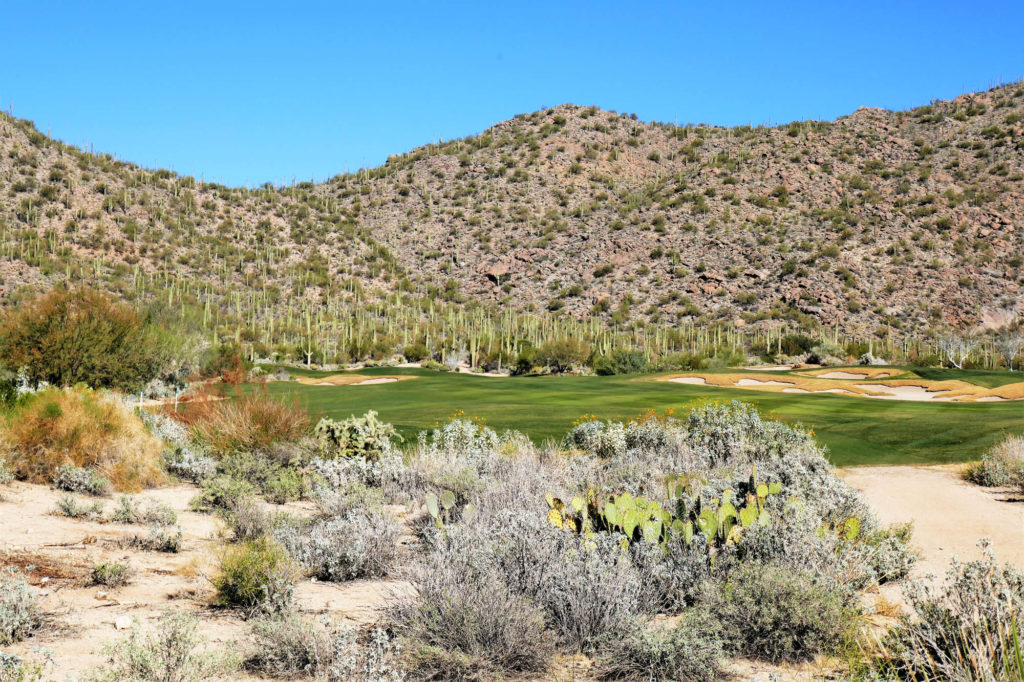
Gallery Golf Club
Our trip concluded with a round at the acclaimed North Course at The Gallery Golf Club, set just down Tangerine Road from Dove Mountain.
If you are going to call a golf course facility “The Gallery” you best make sure the property is chock full of holes, vistas and moments worthy of a space to display works of art. Course architect John Fought has fashioned a pair of tracks and an overall experience that is both “museum-worthy” and a challenge to all levels of golfers.
Keeping a focus is the challenge on the North Course, which offers sweeping views of the high Sonoran Desert landscape among subtle elevation changes and a rolling routing. The North Course has been ranked as the top track in Southwest Arizona by Golf Digest and is acknowledged as one of Golfweek‘s Top 100 Modern Courses.
When The Gallery’s two golf courses were being planned, Fought was given the freedom to find his routings out of desert hardscrabble that was full of rocks, boulders, canyons and washes. Both courses showcase the best of desert golf and are lush, green havens amid its arid environment.
“We wanted to create courses that were beautiful and artistic but we also made sure they were more than just pretty pictures,” Fought said.
Once he determined the site for the property’s lavish clubhouse, he laid out North on the toughest ground, with the knowledge that another course would be built later on land that was somewhat flatter and less severe.
“When we started to build the North Course, the site was really, really remote and a challenge to work with,” Fought said. “We knew there would be plenty of forced carries and holes created along the canyon edges because of the wash that ran through the site and all the rocks – I mean huge boulders.”
The North Course is a par-72 and 7,384 yards from its back set of four tees. After negotiating North’s canyon holes, players must face the massive 725-yard, par-5 ninth. “The ninth is daunting on the scorecard but it is very playable because the first two shots are downhill,” Fought said. “It’s really a placement hole rather than one that requires nothing but length.”
If you have a chance to play The Gallery, the memories you will gain will be pretty as a picture.
If you haven’t considered Tucson as a prime contender for your next golf trip, well, then you are missing the boat.
